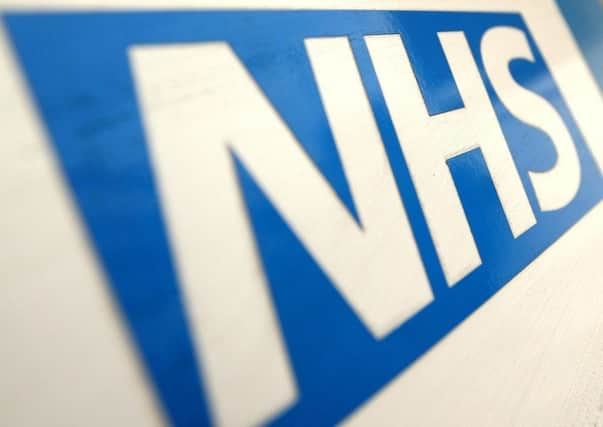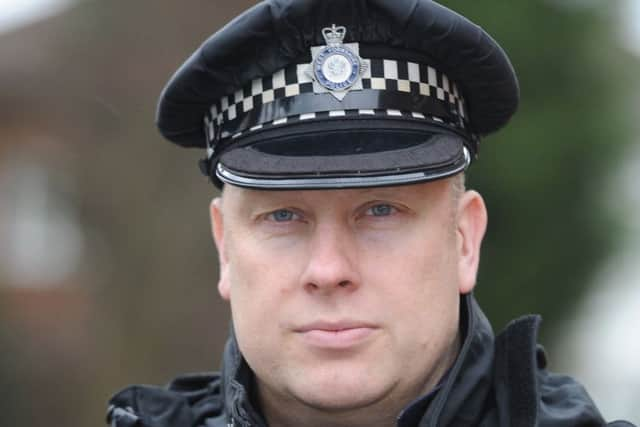Missing patients: Almost 1,000 reported to Yorkshire's largest police force in a year


The statistics, shared with The Yorkshire Post by West Yorkshire Police Federation, shed further light on the increasing number of people going missing.
Advertisement
Hide AdAdvertisement
Hide AdThe federation today said the 982 cases involving patients in the year up to the end of June were part of a bigger picture involving people under the care of public sector organisations going missing.


Federation chairman Nick Smart said: “They’ve gone to hospital for a reason. Some will be physically ill, some will be mentally ill.
“The staff say they don’t have the powers to get hands on to stop them [leaving]. They’ll phone up, say they’re high risk, then it’s ‘over to you police’.”
By the federation’s estimation, one in four of all missing persons cases in the county involves someone who was in the care of another public sector agency.
Advertisement
Hide AdAdvertisement
Hide AdThey include children in care, hospital patients and elderly people in residential homes.


The number of people reported missing by NHS trusts in West Yorkshire has risen by 65 per cent, up from 586 in 2014/15 to 982 in 2015/16.
Leeds was the division with the highest number of missing patients, up by 70 per cent to 426.
Guy Brookes, clinical director for Leeds Care Group, said they informed police if someone went missing but only requested an active search for the most vulnerable.
Advertisement
Hide AdAdvertisement
Hide Ad“If we were concerned because of their health, quite sensibly it would be the health services going out to check on them,” he said. “The vast majority of times really it will be for information.”
Both West Yorkshire Police and the federation have warned that the increasing number of missing persons cases of all kinds is pushing the county’s force to breaking point.
Mr Smart said public sector bodies, including the NHS, had a duty to help reduce the number of people in their care being reported missing.
He said the government also needed to recognise the urgency of the issue.
Advertisement
Hide AdAdvertisement
Hide Ad“If you’re not going to give us more officers, give the NHS more staff or powers at source so they can stop it impacting on police resource,” he said.
“It’s thousands of police hours a year that could be saved if there were solutions at source.”
Dawn Marshall, nurse director at Leeds Teaching Hospitals NHS Trust, said there were already adequate powers of detention.
She said: “While we cannot detain people who do not wish to stay in hospital, staff are required to act in the best interest of vulnerable patients.
Advertisement
Hide AdAdvertisement
Hide Ad“Under the Mental Capacity Act staff have a duty of care to maintain the patient’s safety and prevent the patient leaving, and a deprivation of liberty order is often applied in these circumstances.”
The most high risk mental health patients can also be accommodated in secure units where needed.
Dr Brookes said: “There’s physical security in terms of walls and fences so there are particular standards for these which we follow.
“There’s also the staff training and care planning in order to improve the secure as it were.
Advertisement
Hide AdAdvertisement
Hide Ad“If somebody did leave then we would involved the police because we would consider that a risk.”
A government spokesman said it took the issue of missing people very seriously since they represented some of the most vulnerable in society.
He said: “We expect hospitals to have robust measures in place to ensure the safety of patients and NHS Trusts should have effective relationships with other agencies, including the police, and a clear plan of action for managing risks associated with missing persons.”
He added that the importance of the issue meant police, hospital trusts, local authorities and other partners must work together, as highlighted in its Missing Children and Adults Strategy.
Advertisement
Hide AdAdvertisement
Hide AdMs Marshall said Leeds Teaching Hospitals NHS Trust had developed rigorous policies and procedures with local partners, including West Yorkshire Police, to ensure that those at risk were located as soon as possible.
She said: “On our wards and in our departments a risk assessment is undertaken to ascertain an individual’s presenting level of risk and capacity to make their own decisions. If a patient is deemed at risk there are a number of agreed interventions available to staff to keep the patient safe.
“Each missing person is recorded via our incident/Datix system and in cases these incidents are looked into by our staff. In many of these cases patients have capacity and have chosen to leave, therefore legally have the right to do so.”
The Leeds Care Group, which is part of Leeds and York Partnership NHS Foundation Trust, holds monthly meetings with police to review cases.
Advertisement
Hide AdAdvertisement
Hide AdIt also follows the Herbert Protocol, which sees useful information compiled by police and other agencies in case a vulnerable person goes missing.
But Mr Brookes said the key was to work continuously with police to develop the best procedures and arrangements.
“I’d suggest it’s understanding what are their concerns and what are ours,” he said, “I think that’s important from the police’s point of view so they understand when we need them.”